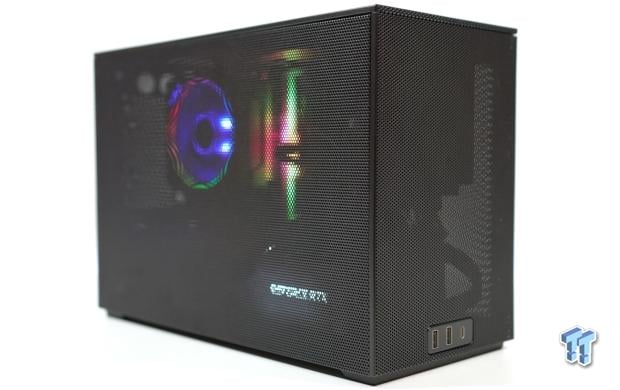
The Bottom Line
Pros
- + Small price tag
- + Tons of modularity
- + Dual radiator ready
- + mATX motherboard and ATX PSU compatibility via optional extender bracket
- + Triple-slot GPU support
Cons
- - A tad noisy
Should you buy it?
AvoidConsiderShortlistBuyIntroduction, Specifications, and Pricing
When we last looked at a case from SSUPD, we looked at the Meshroom S, which we loved. Today we have the newest member of the SSUPD Meshroom family, the Meshroom D. Priced at $110, it's a good deal for the money, considering SSUPD's modularity. The Meshroom D is available in three colors: charcoal black, fossil gray, and snow white.

Packaging
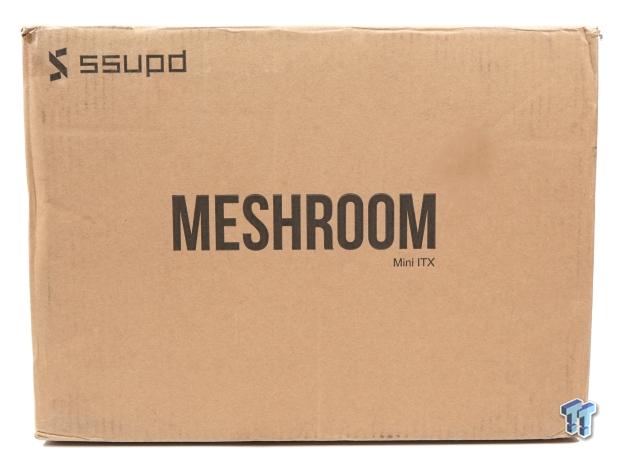
The packaging that SSUPD has shipped this mITX case in is fairly standard and quite light.
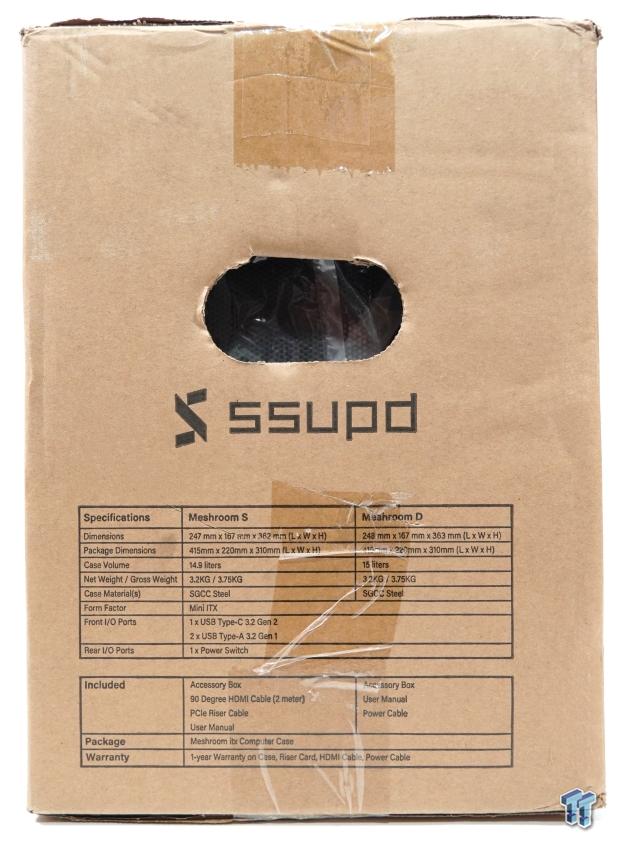
Specifications for the Meshroom S and Meshroom D are on the side, probably used to reduce cost.
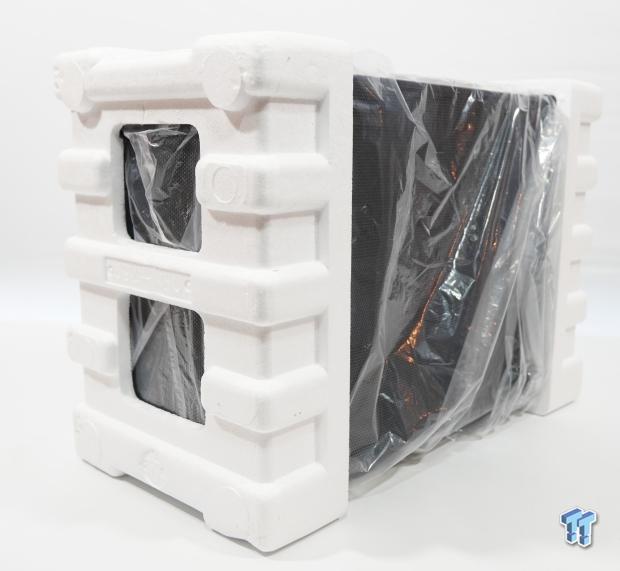
Removing the Meshroom D from the cardboard shipping box is another standard sight, two foam end pieces with a clear plastic bag.
Outside the SSUPD Meshroom D mITX Case
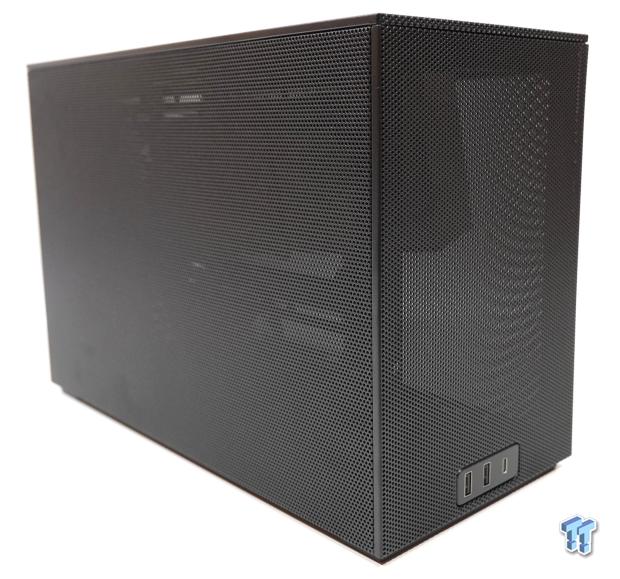
Now, with all the packaging removed from the Meshroom D, it shows another very familiar sight, but this time in a different, more traditional orientation. Mesh, like in the name, is the name of the game for ultimate airflow and ventilation for high-end computer components. External dimensions are 247x167x363mm while coming in at a weight of 3.2 kg or 7.05 lb.
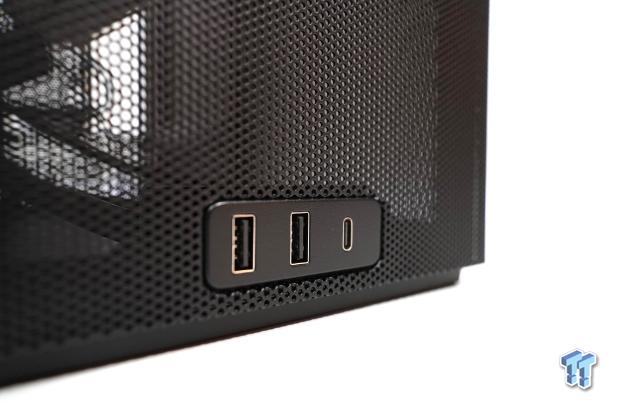
The front I/O has two USB 3.2 type-A ports and a single USB 3.1 Gen 2 type-C port.
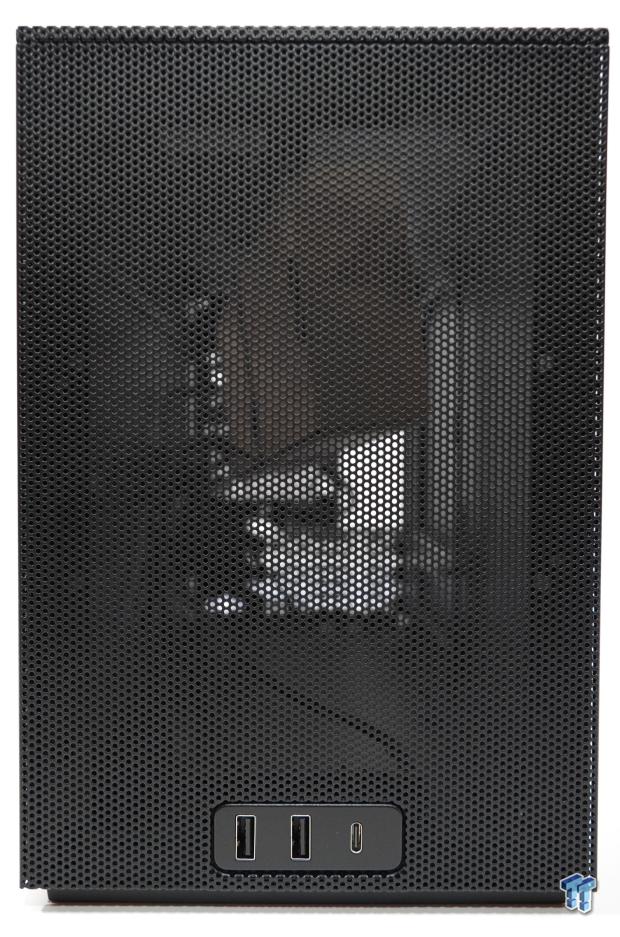
Like every other panel on the Meshroom D, the front panel is held in with POGO pins, so no tools are needed to get inside.
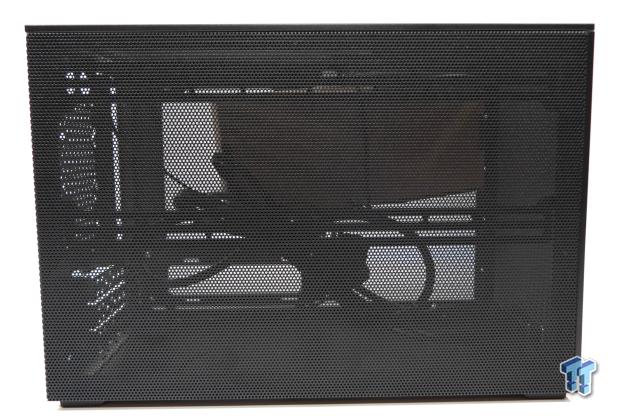
Seeing directly through both mesh side panels with no dust filters makes for extremely good airflow but at the expense of more dust intake, so keep that in mind.
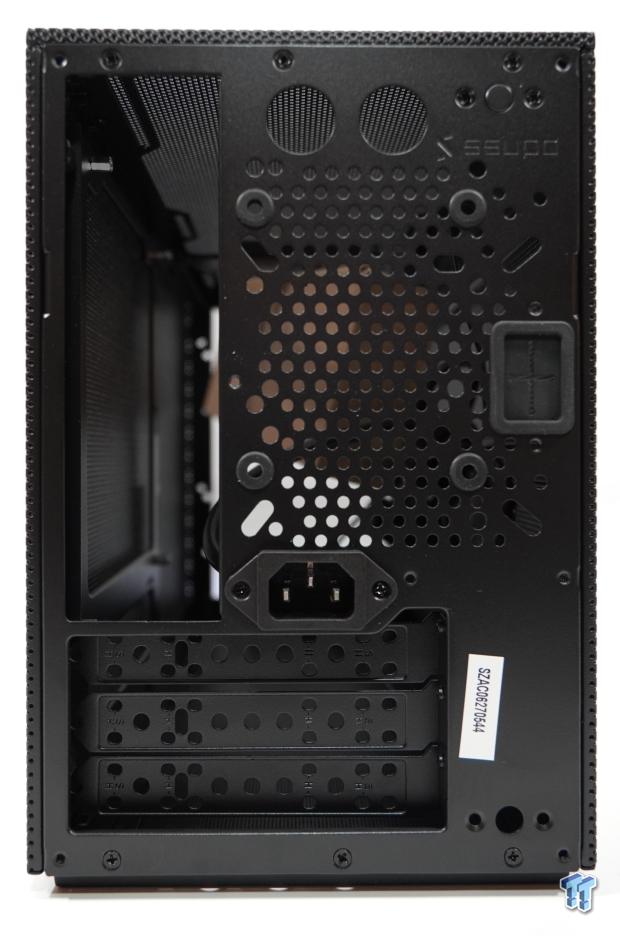
The rear of the Meshroom D is where things are very interesting. Out of the box, the Meshroom D supports only mITX and mini-DTX motherboard form factors, but with an optional extender bracket, this can be expanded to support mATX motherboards. Two holes on the top are meant for external water cooling support, while the power button can be relocated to the rear bottom. Support for up to a 92mm fan for air exhaust or 2.5" SSD/HDD, then a cable pass-through grommet is in the center. Just under the fan mount is the PSU cable extension. The PCIe slot covers can also be reused as SSD or HDD mounts using pre-drilled holes.
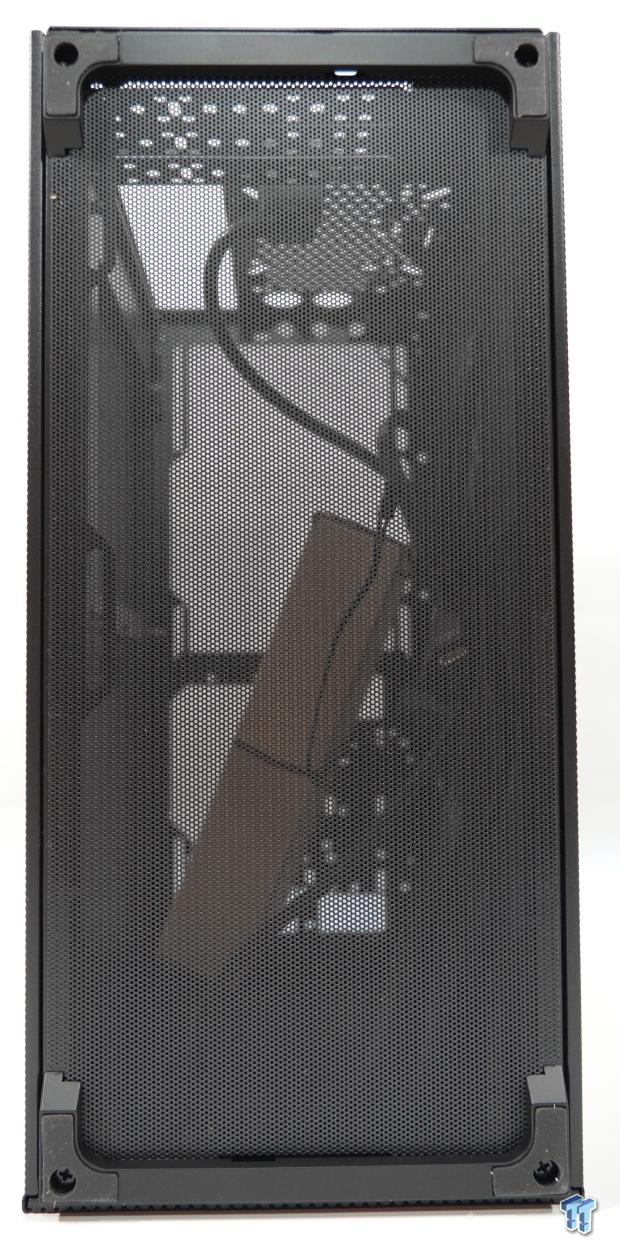
However, a full-length dust filter on the bottom is held in with magnets to ensure the GPU pulls fresh air in without the dust. The four feet are screwed into place with good-sized rubber pads to ensure the Meshroom D doesn't slide all over your desk.
Inside the SSUPD Meshroom D mITX Case
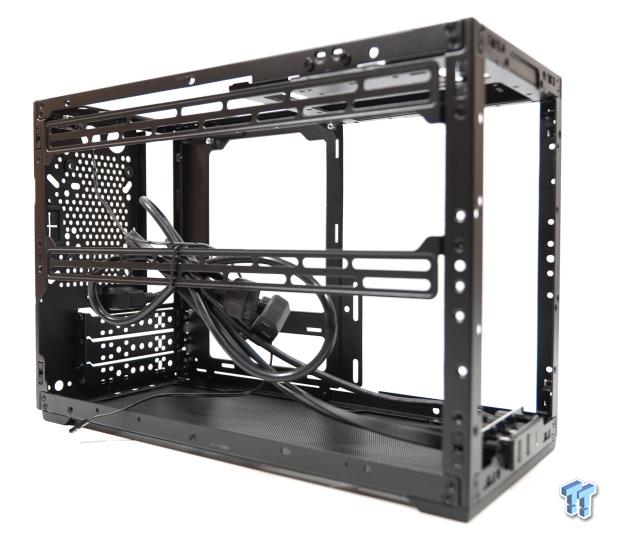
Removing all the POGO pin panels shows the frame of the Meshroom D. Right off the bat, support for up to a 280mm radiator or AIO is available using the adjustable side brackets. If air cooling is more your thing, up to 142mm in total height is supported. GPU support is limited to three slots with a maximum length of 325mm and width of 140mm. If the front I/O ports are removed, the length support moves up to 336mm while the height remains unchanged.
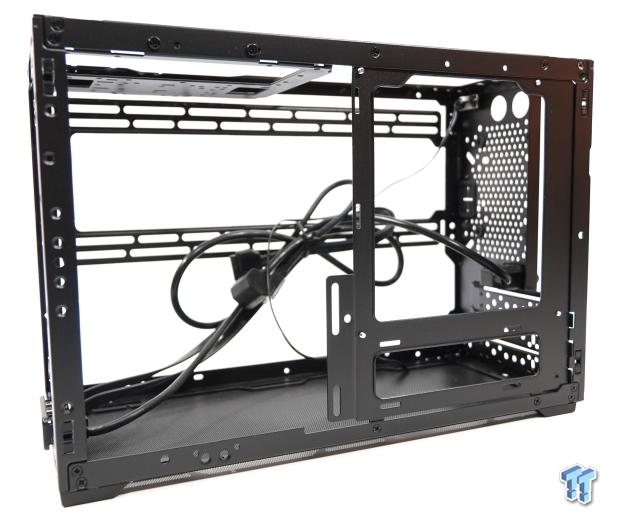
The backside of the motherboard tray, again, can be completely removed.
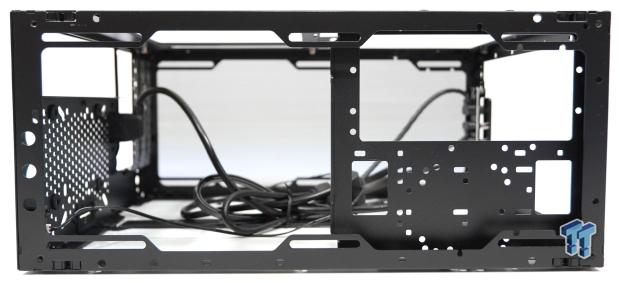
The top section is more or less reserved for the PSU and storage. Up to an ATX PSU is supported via the removable top plate. Two 3.5" HDDs or five 2.5" SSD/HDDs can also be installed here.
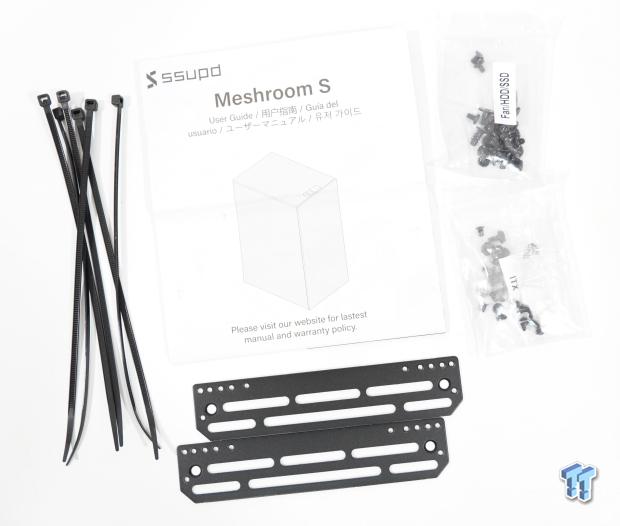
SSUPD includes zip ties, a user guide, various screws, and two multifunction brackets. One should look at the 103-page user guide on the SSUPDs product page, which is very detailed, with just about every possible build scenario.
Test System, Installation, and Finished Product
- Motherboard: B650I AORUS Ultra(AMD B650) - Buy from Amazon
- CPU: AMD Ryzen 9 7900 - Buy from Amazon
- Cooler: AMD Wraith Prism - Buy from Amazon
- Memory: Patriot Viper Venom RGB DDR5-5600 32GB - Buy from Amazon
- Graphics Card: NVIDIA RTX 3090 Founders Edition - Buy from Amazon
- Storage: Kingston Fury Renegade Gen4 1TB PCIe x4 NVMe M.2 SSD - Buy from Amazon
- Case: SSUPD Meshroom D - Buy from Amazon
- Power Supply: Cooler Master V 1100 SFX Platinum ATX 3.0 PSU - Buy from Amazon
- OS: Microsoft Windows 11 Pro 64-bit Build 22621 - Buy from Amazon
- Software: AIDA64 Engineer 6.8.6300, and CPU-z 2.03.0 x64
Final Thoughts
Testing the SSUPD Meshroom D, the usual mITX testing hardware was installed. The AMD Ryzen 9 7900 is a 12-core, 24-threaded CPU with a Wraith Prism CPU cooler installed on an AORUS B650I Ultra mITX motherboard. 32GB of DDR5-5600 RGB from Patriot Viper and a Kingston Fury Renegade 1TB PCIe 4.0 M.2 NVME SSD were also installed. The NVIDIA RTX 3090 FE also took up the reins for the GPU.
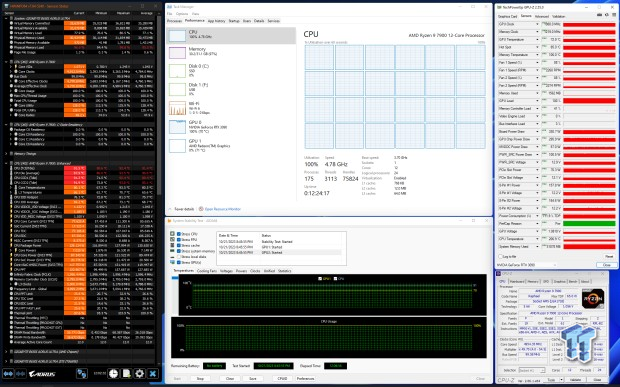
Running a full synthetic load via Aida64's System Stability Test, the Ryzen 9 7900 pulled around 133 watts on average, hitting its thermal limit of 90C, but these new breeds of AM5 CPUs are designed to run that way. The Ryzen 9 7900 ran at 90C while doing 4.78 GHz, which is quite impressive. The NVIDIA RTX 3090, power limited to 95%, averaged just about 331 watts while only hitting a maximum temperature of 72.9C while maintaining a 1980 MHz clock. All tests were conducted in a 19C ambient environment over 12 hours.
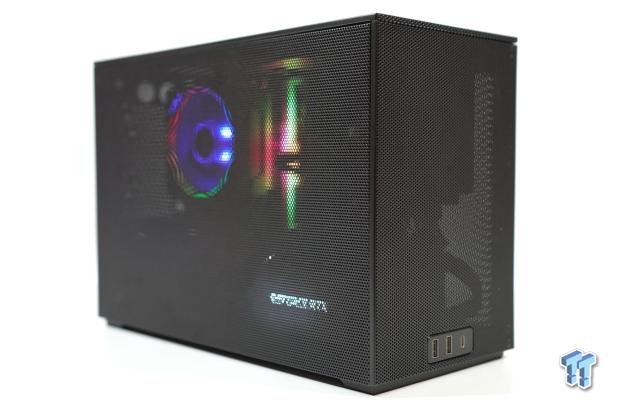
In closing, the Meshroom D from SSEPD undoubtedly lives up to the Meshroom name. Mesh is the name of the game, and that's what it delivers at the cost of being a bit noisy. Having a vast amount of support for mITX water cooling is scarce, but when executed, it results in big bulky designs that question going SFF in the first place. Small form factor cases like Cooler Master's NR200P and Corsair's 2000D offer many of the same features as the Meshroom D at virtually the same price point. The only SFF case of the three that includes a fan, let alone two, is the NR200P.
Just like the Meshroom S that came before the D, modularity, and versatility in the Meshroom line are still in a league of their own. SSUPD wants you to be free to build an mITX or mATX system the way you want it like some burger joints allow you to do. So if you are looking for a mesh mITX case that allows for tons of water cooling, look no further than the Meshroom D.

